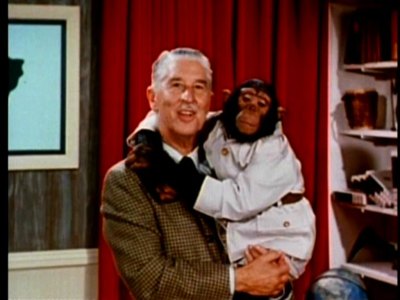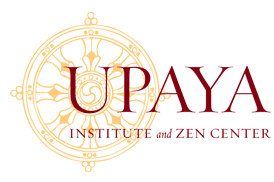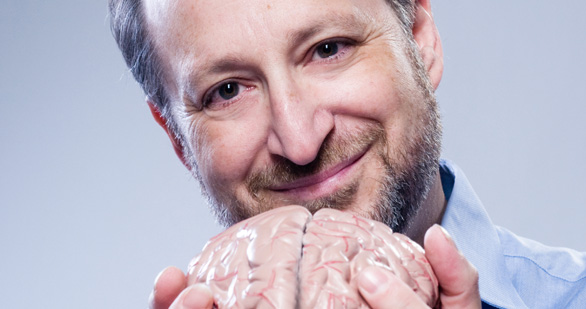We have known for a long time that the brain shrinks with age, and that the hippocampus shrinks considerably in old age. Now we also know that the hipocampus shrinks MORE in Catholics and born-again protestants - as well as those with no religion. Maybe this is another good reason to be a Buddhist? Meditation is know to prevent hippocampal shrinkage.
The researchers attribute the shrinkage to the cumulative stress of being a religious minority - but that makes no sense in the U.S., where Catholics and born-again Protestants are the majority religion by far - whereas for atheists, there is certainly a lot of bias against them (us) that could cause stress.
The stress element is logical - we know from trauma and PTSD that the stress response (cortisol in particular) shrinks the hippocampus. I would want to see if cognitive dissonance creates significant stress - enough to account for this change in brain volume. My suspicion is that many people in traditional religions experience cognitive dissonance between their beliefs and the reality within which they live.
The abstract and a link to the full article are at the bottom.
New research finds membership in a minority religion seems to hasten a loss of volume of the hippocampal region of the brain.
By Tom Jacobs
Aging baby boomers are using a variety of methods to remain mentally sharp, from brain fitness classes to simply staying social. Newly published research suggests another, admittedly unorthodox approach to promoting brain-cell survival:
Changing your religious affiliation.
A study published in the online journal PLoS ONE found a key part of the brain atrophied more rapidly in Catholics and born-again Protestants than it did in mainline Protestants. This accelerated shrinkage was also found in people who reported a life-changing religious experience, as well as those with no religious affiliation.
The reason, the researchers speculate, is the cumulative stress that comes with being a member of a religious minority.
The research team, led by Amy Owen of Duke University, notes that the human brain shrinks with age, and the region known as the hippocampus, which has been linked to learning and memory, typically atrophies at an accelerated rate late in life. This shrinkage has been linked to depression, dementia and Alzheimer’s disease.
Intrigued by previous research that linked smaller hippocampus volume with hyper-religiosity in some epileptics — as well as research on the effect of meditation on the hippocampus — the researchers decided to conduct a wider study of religious belief and brain shrinkage. The participants were 268 residents of the American Southeast, all of whom were at least 58 years old when the project got underway. All were involved on an ongoing basis for two to eight years.
MRI scans of their brains were performed every two years; data on their spiritual life and psychological state (including levels of stress and depression) was collected annually. Religion-oriented questions included their specific affiliation (or lack thereof); how often they worship publicly and pray privately; and whether they consider themselves “born again,” or have had any other religious experience that changed their life.
“Significantly greater hippocampal atrophy was observed from baseline to final assessment among born-again Protestants, Catholics, and those with no religious affiliation, compared with Protestants not identifying as born-again,” the researchers report.
“These longitudinal associations were not explained by baseline psychosocial or psychiatric factors (social support, stress, and depression status), demographic factors, duration in the study, or total baseline cerebral volume.”
The researchers found no relationship between changes in hippocampal volume and a participant’s frequency of public or private religious activity. They did, however, find greater shrinkage in people who reported at the study’s outset that they had undergone life-changing religious experiences.
“Such experiences have the capacity to produce doubts regarding previously unquestioned convictions, potentially inducing cumulative stress even if the experience was subjectively positive,” Owen and her colleagues write. They add that “If the experience prompts a change in religious groups, existing social networks may also be disrupted” — another source of stress.
The researchers suspect low-level tension is also impacting the brains of non-mainline Protestants.
“These findings may reflect potential cumulative stress associated with being a member of a religious minority,” they write. “Though religious factors have been associated with positive mental health, studies have shown members of religious minority groups may also experience stressors related to those group affiliations.”
The researchers concede that the pool of study participants was “geographically and religiously constrained,” consisting largely of “Southeastern Protestant Christians.” Perhaps in a region of the country that is more religiously diverse, or where religion plays less of a role in public life, the stressors on those with minority beliefs might be less pronounced.
Nevertheless, these findings raise interesting questions about the role cumulative stress plays in hastening our mental decline. The researchers note that a 2009 study found that people who regularly engage in one stress-reduction technique — meditation — tend to have larger-than-average hippocampal volume.
The implication of all this is that Buddhists, being members of a minority religion in the U.S., are subject to stress-related hippocampal shrinkage. But meditation, which is a key component of Buddhist religious practice, may counteract this tendency.
Of course, anyone can meditate, or use other methods of stress reduction. If Owen and her team are right, the stress of being a nonconformist takes its toll on our neural system, and taking action to stay calm and centered is the brainy way to respond.
From PLoS ONE, an open access collection of journals:
Religious Factors and Hippocampal Atrophy in Late LifeAmy D. Owen1, R. David Hayward2,3*, Harold G. Koenig1,2,4, David C. Steffens2,4, Martha E. Payne2,3
1 Center for the Study of Aging and Human Development, Duke University Medical Center, Durham, North Carolina, United States of America, 2 Department of Psychiatry and Behavioral Sciences, Duke University Medical Center, Durham, North Carolina, United States of America, 3 Neuropsychiatric Imaging Research Laboratory, Duke University Medical Center, Durham, North Carolina, United States of America, 4 Department of Medicine, Duke University Medical Center, Durham, North Carolina, United States of America
Abstract
Despite a growing interest in the ways spiritual beliefs and practices are reflected in brain activity, there have been relatively few studies using neuroimaging data to assess potential relationships between religious factors and structural neuroanatomy. This study examined prospective relationships between religious factors and hippocampal volume change using high-resolution MRI data of a sample of 268 older adults. Religious factors assessed included life-changing religious experiences, spiritual practices, and religious group membership. Hippocampal volumes were analyzed using the GRID program, which is based on a manual point-counting method and allows for semi-automated determination of region of interest volumes. Significantly greater hippocampal atrophy was observed for participants reporting a life-changing religious experience. Significantly greater hippocampal atrophy was also observed from baseline to final assessment among born-again Protestants, Catholics, and those with no religious affiliation, compared with Protestants not identifying as born-again. These associations were not explained by psychosocial or demographic factors, or baseline cerebral volume. Hippocampal volume has been linked to clinical outcomes, such as depression, dementia, and Alzheimer's Disease. The findings of this study indicate that hippocampal atrophy in late life may be uniquely influenced by certain types of religious factors.
Citation: Owen AD, Hayward RD, Koenig HG, Steffens DC, Payne ME (2011) Religious Factors and Hippocampal Atrophy in Late Life. PLoS ONE 6(3): e17006. doi:10.1371/journal.pone.0017006
Tags:
Religious Affiliation, Brain Shrinkage, research, membership in a minority religion, loss of volume, hippocampal region, Tom Jacobs, Miller-McCune, brain, psychology, aging, Religion, research, Amy Owen, Duke University, hippocampus, stress, cortisol, born-again Protestants, Catholics, no religious affiliation, PLoS ONE, R. David Hayward, Harold G. Koenig, David C. Steffens, Martha E. Payne



















 Listen/View
Listen/View